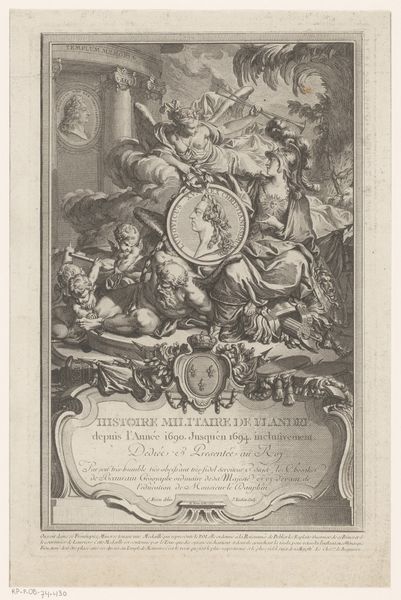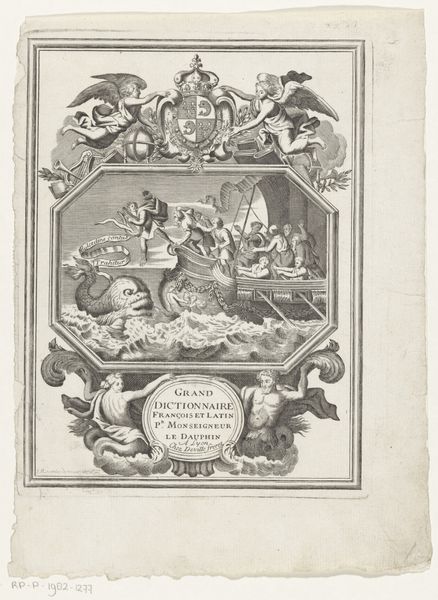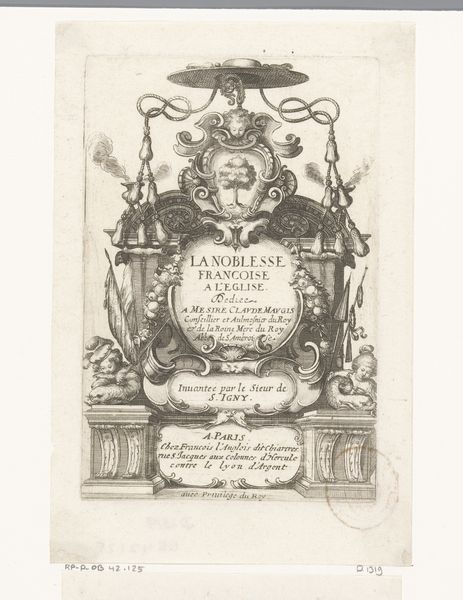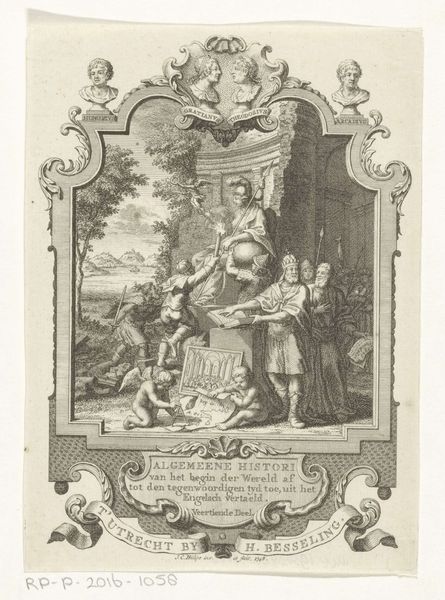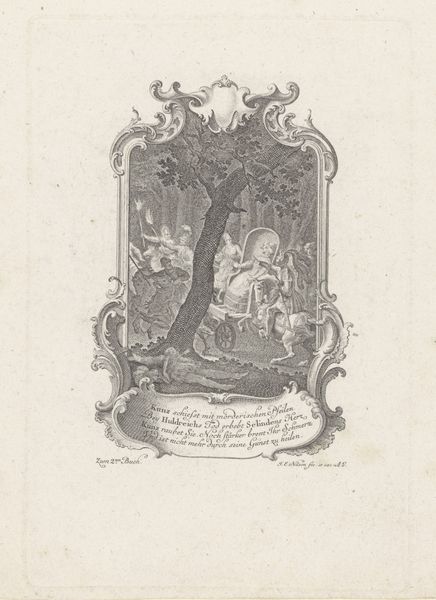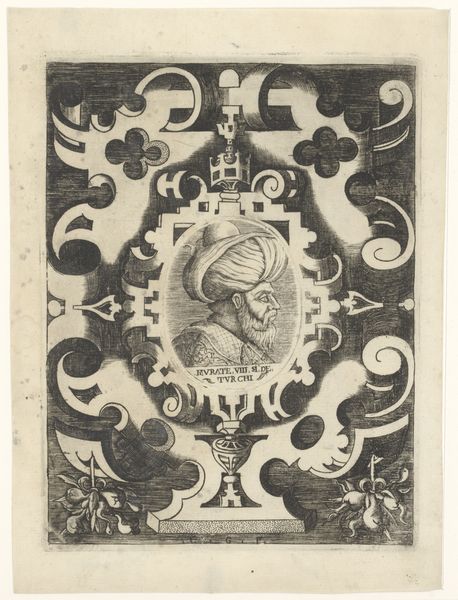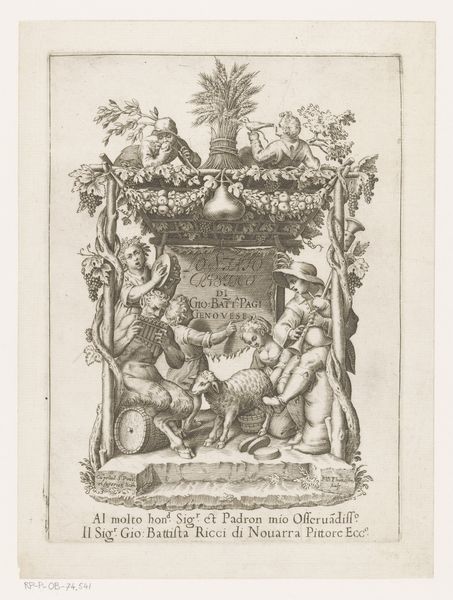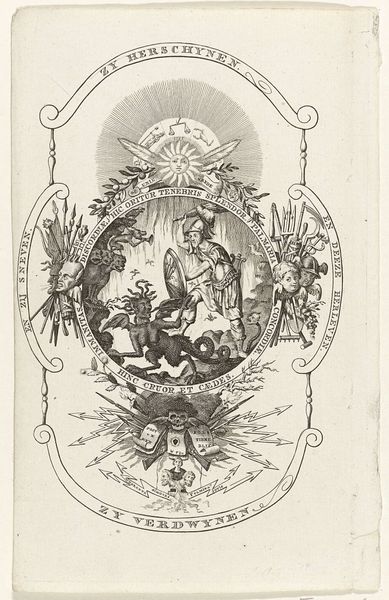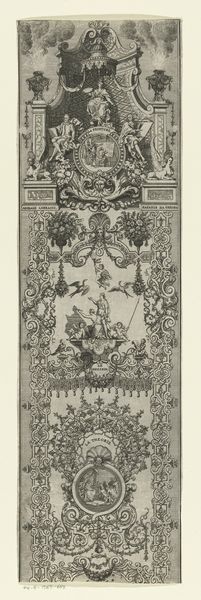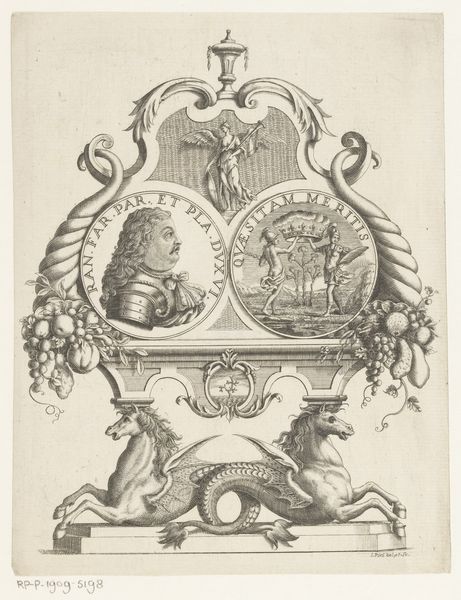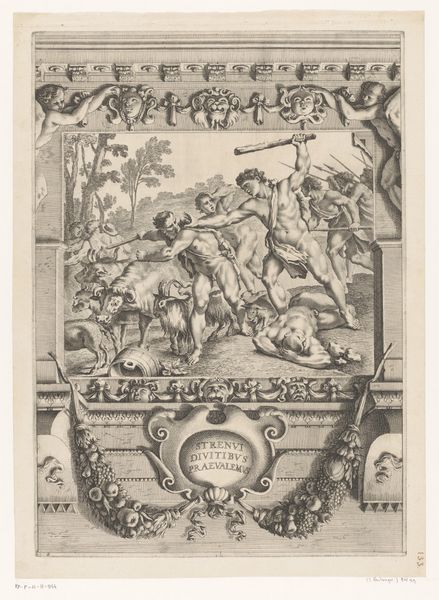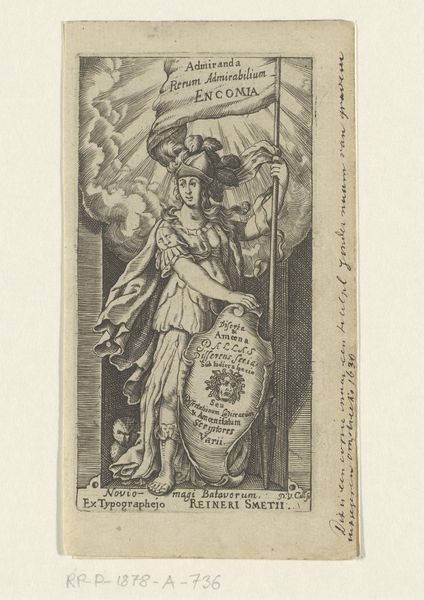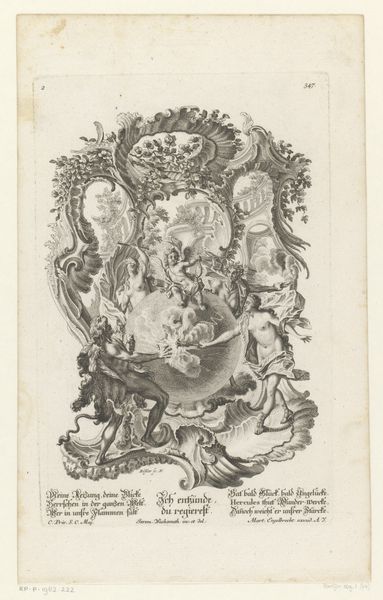
print, engraving
#
narrative-art
#
baroque
#
pen drawing
# print
#
pen illustration
#
old engraving style
#
figuration
#
pen-ink sketch
#
line
#
pen work
#
history-painting
#
engraving
Dimensions: height 190 mm, width 139 mm
Copyright: Rijks Museum: Open Domain
Curator: What a dramatic scene! Zacharias Dezius created this print in 1713; it's called "Man Attacked by Devils," and you can see the Baroque sensibilities in its ornamental composition. Editor: My first impression is the claustrophobia of the central image. The figure is hemmed in on all sides by demons and then also literally caged-in! There is this little moment of aspiration into a heavenly register, but the overall effect is terrifying. Curator: Absolutely. Look how the demons are depicted, hybrids of animalistic and human features, pressing in from every angle. It is like they are psychological manifestations given physical form. This links to long traditions in folklore and the visual arts around temptations, sin, and internal struggle. Editor: The artist effectively harnesses traditional symbolism and iconography. For example, the barred window – the symbol of imprisonment that may allude to specific religious or societal restraints of the time. There’s also the upward gaze, a reference to hope amidst hardship that has political implications regarding individual belief versus societal structure. Curator: Precisely. Consider that, even though the man is physically constrained and tormented, he still looks above to the Virgin and Child hovering within a burst of celestial light above, almost in answer. This element is vital to Baroque visualizations of devotional experiences: internal torment is countered with a strong image of faith as salvation. It is such a tense relationship between belief and politics during this time, with faith and hope often offered as escapes. Editor: Also notice how that radiant light defines an almost palpable boundary – the sacred space of the Virgin providing protection from the chaotic darkness. Curator: And that inscription at the bottom, with its appeal to heaven even as torment continues, speaks to the print's broader use as both propaganda and perhaps, on an individual scale, for prayerful guidance. It's a poignant visualization of religious fortitude when challenged by worldly or unearthly terrors. Editor: I'm still drawn to the dynamism in the engraving: the sharp, sinuous lines creating figures that feel as though they are moving. These weren’t meant just to be admired but also experienced viscerally! The intensity in Dezius’ visual decisions heightens the spiritual narrative. Curator: It is a fascinating synthesis of its era’s political and spiritual currents, captured in a powerful print that resonates beyond its time. Editor: Definitely food for thought! What this image does is remind us that every image is loaded and framed in certain cultural ways.
Comments
No comments
Be the first to comment and join the conversation on the ultimate creative platform.
